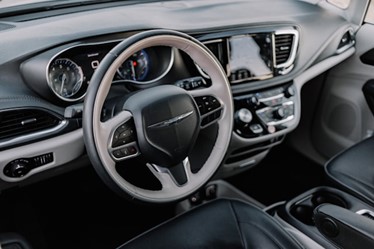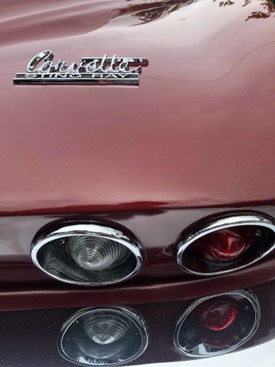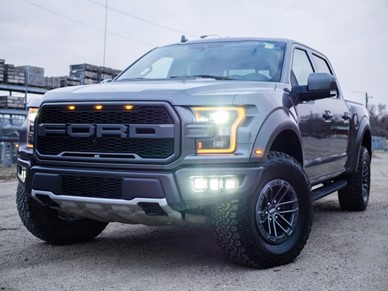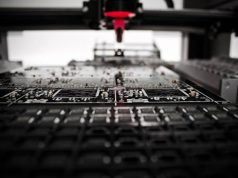Louie Valdez, a renowned automotive journalist, and industry expert, has spent years delving into the intricate world of automobiles, focusing on the powerful triad that defines America’s automotive landscape: the Big Three automakers. With a career spanning more than two decades, Valdez has become a trusted voice in automotive journalism, known for his keen analysis and engaging storytelling. In the following article, he uncovers the history, innovations, and challenges facing the Big Three, exploring how these automotive giants continue to shape the industry and influence car culture around the world.
In the realm of automobiles, the term “Big Three” carries weight and significance, denoting the three largest car manufacturers in the United States. These behemoths of the industry are General Motors Company, Stellantis (formerly known as Fiat Chrysler), and Ford Motor Company. Collectively, they represent the epitome of American automotive prowess and innovation, shaping not only the country’s automotive landscape but also influencing global trends and developments.
Louie Valdez Highlights the Legacy of Innovation
The term “Big Three,” often used interchangeably with “Detroit Three,” refers to the three major American automotive manufacturers. This nickname not only reflects their significant share of the automotive market but also emphasizes the unique geographical connection they have with the city of Detroit. For decades, these companies have been the lifeblood of the city, driving economic growth, providing thousands of jobs, and fostering a rich cultural identity tied to the automotive industry.
The roots of this connection can be traced back to the early 20th century when Detroit emerged as the epicenter of automobile manufacturing. Pioneering figures like Henry Ford established manufacturing plants that revolutionized the production process, transforming Detroit into “The Motor City.” The city’s manufacturing facilities soon became a hub of innovation and production, leading to the mass production of affordable cars that would forever change American society.
As the automotive industry grew, so did Detroit’s economy. The presence of the Big Three attracted workers from across the country, fueling population growth and urban expansion. This influx of labor created a vibrant culture deeply rooted in the automotive tradition, with iconic symbols like classic muscle cars and annual events such as the North American International Auto Show.
However, the concentration of these industry giants in Detroit also meant that the city’s fortunes were closely tied to the health of the automotive industry. Louie Valdez of Westlake Village explains that during economic downturns and periods of industry disruption, Detroit faced significant challenges, including layoffs, plant closures, and a declining population. These struggles highlighted the risks associated with such a heavy reliance on a single industry.
Despite these challenges, the Big Three remain a fundamental part of Detroit’s identity. They continue to invest in the city, contributing to its revitalization and embracing new trends in the automotive world, such as electric vehicles and autonomous driving technology. This ongoing evolution underscores the enduring relationship between Detroit and its automotive giants, reinforcing the moniker “Big Three” as a symbol of resilience, innovation, and a deep-seated cultural heritage.

United Auto Workers: Advocating for the Workforce
Central to the operations of the Big Three is their relationship with the United Auto Workers (UAW) union. Representing the interests of employees across various manufacturing facilities, the UAW plays a crucial role in negotiations, ensuring fair wages, benefits, and working conditions for workers.
The Global Arena: Competing on a Grand Scale
Louie Valdez of Thousand Oaks says that while the Big Three have long held sway over the American automotive market, their dominance has faced formidable challenges from international competitors. Manufacturers such as Toyota, Honda, Hyundai Kia Auto Group, and Nissan have emerged as formidable adversaries, capturing market share with their innovative designs, fuel-efficient technologies, and unwavering commitment to quality.
The Changing Tides: Adaptation and Evolution
The automotive landscape is in a state of flux, with rapid technological advancements and shifting consumer preferences reshaping the industry. In response, these auto giants have embarked on ambitious initiatives to stay ahead of the curve, investing heavily in research and development, particularly in the realm of electric vehicles (EVs).
Sustainability: A Driving Force for Change
Sustainability has become a significant driving force for change across industries, and the automotive sector is no exception. The Big Three automakers are taking substantial steps to align their operations with eco-friendly practices, a move that reflects both an ethical imperative and a strategic response to evolving consumer preferences. The integration of sustainable materials, energy-efficient systems, and LEED-certified manufacturing processes is at the heart of this transformation, signaling a commitment to reducing environmental impact while maintaining high production standards.
As public awareness of climate change and environmental issues grows, consumers are increasingly seeking products that reflect a commitment to sustainability. The Big Three are responding by adopting greener practices, not only in their production lines but throughout their entire supply chain. This includes sourcing sustainable materials, such as recycled plastics and renewable resources, to reduce the reliance on virgin materials and minimize waste. Energy-efficient systems, including solar panels, wind turbines, and other renewable energy sources, are being integrated into manufacturing plants to lower overall energy consumption.
Louie Valdez of Thousand Oaks reports that Leadership in Energy and Environmental Design certification has become a benchmark for sustainability in building design and construction. The industry is embracing LEED principles to create manufacturing facilities that meet rigorous environmental standards. This involves careful planning in areas like water conservation, energy efficiency, and waste reduction, ensuring that new facilities contribute positively to the environment. Achieving this certification demonstrates a tangible commitment to sustainability and serves as a signal to environmentally conscious consumers that these companies are serious about reducing their carbon footprint.
In addition to internal changes, automakers are incorporating sustainability into their product offerings. Electric vehicles and hybrid models are becoming more prominent in their lineups, providing customers with greener alternatives to traditional combustion engines. These eco-friendly vehicles are designed to reduce emissions and lower fuel consumption, aligning with global efforts to combat climate change. The Big Three are investing heavily in EV infrastructure, including battery technology, and charging networks, to support the broader adoption of electric vehicles.
Furthermore, sustainability efforts extend beyond manufacturing and products. The Big Three are engaging in corporate social responsibility (CSR) initiatives that contribute to environmental and social causes. This may include partnerships with environmental organizations, community outreach programs, and efforts to promote recycling and resource conservation. By taking a holistic approach to sustainability, the Big Three are demonstrating their commitment to a more sustainable future, not just for the automotive industry but for society as a whole.

Beyond Borders: A Global Perspective
While the influence of the Big Three extends far beyond American shores, their global footprint varies in comparison to their domestic dominance. In markets such as China, Japan, Germany, and South Korea, local automakers hold sway, each boasting their own triumvirate of automotive giants.
Looking Ahead: Navigating New Horizons
As the automotive landscape continues to evolve, the Big Three find themselves at a critical juncture, poised to navigate new challenges and capitalize on emerging opportunities. Louie Valdez explains that whether it’s embracing electric mobility, fostering innovation, or redefining luxury, these automotive titans remain at the forefront of industry innovation, driving towards a future defined by sustainability, innovation, and excellence.








